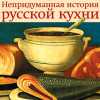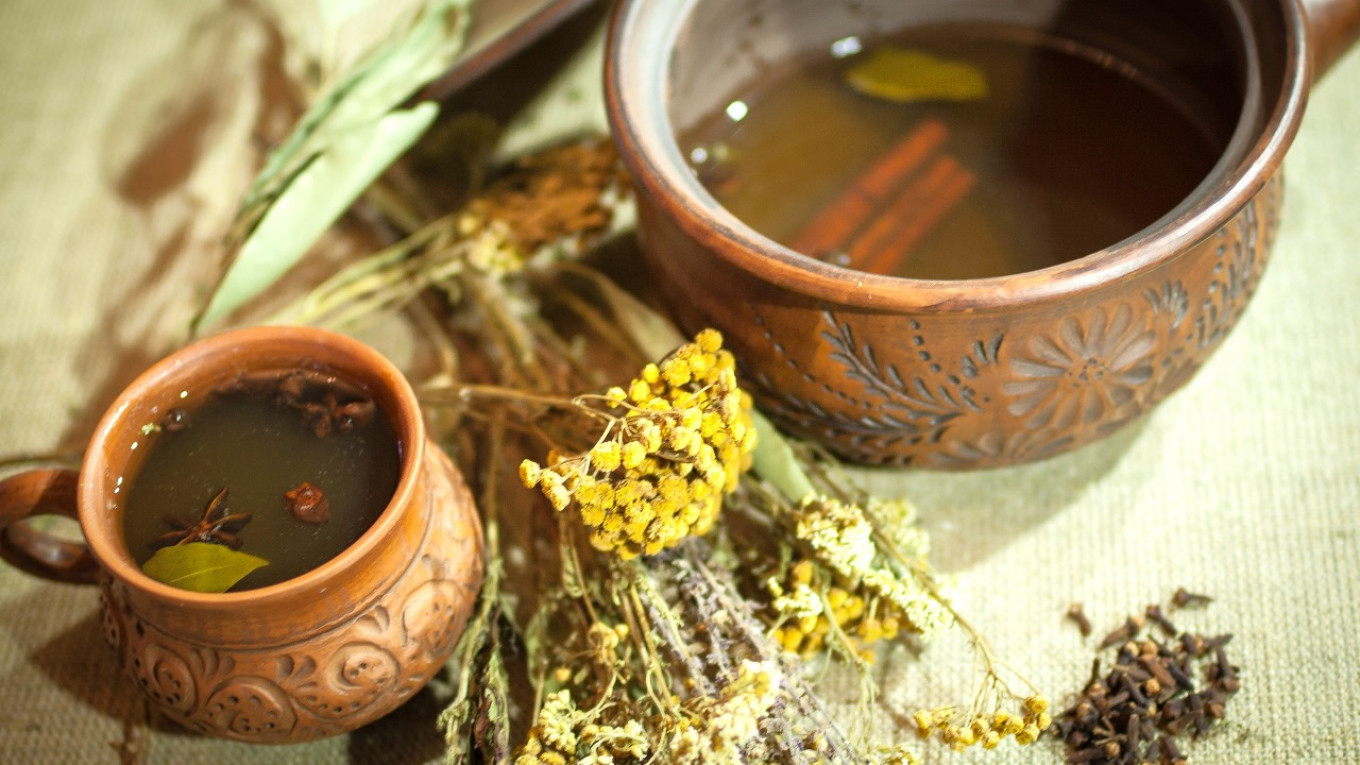Sbiten is sometimes called the Russian version of mulled wine, although it is made with honey. Today most people find the drink very sweet — even too sweet. But it’s good to remember that in the Middle Ages European wine was much sweeter than it is today. Tastes have changed over the centuries.
Sbiten is a very old drink, first mentioned in the ancient Chronicles in 1128. It is a hot drink made with herbs, honey and spices. It was drunk long before tea appeared in this part of the world. Hot sbiten had a warming and anti-inflammatory effect, so it was drunk mainly in winter. But there was also a cold version of sbiten, which was a very popular way to quench thirst in the bathhouse or on a hot summer day.
The word sbiten is from the verb “sbivat.” The verb has a multitude of meanings, mostly having to do with knocking or shooting something down. But in some contexts it means “to put together.” And in fact, sbiten was made in two separate containers. In one container was a honey mixture, in the other — herbs. To make the drink the contents of the two containers were mixed — “put together” — which gave the name “sbiten.”
This drink appeared when the way of life began to change and public eateries appeared. In the 15-16th centuries, there was a rapid rise in the urban population. Industry began to be developed, and peasants came to the cities for seasonal work. All these people needed to eat and drink. This is when shops opened to sell little pies, breads and sbiten. Vendors strolled along the streets both in summer and winter: in the cold season they sold a warming drink, and when it was hot they sold something cold to quench thirst.
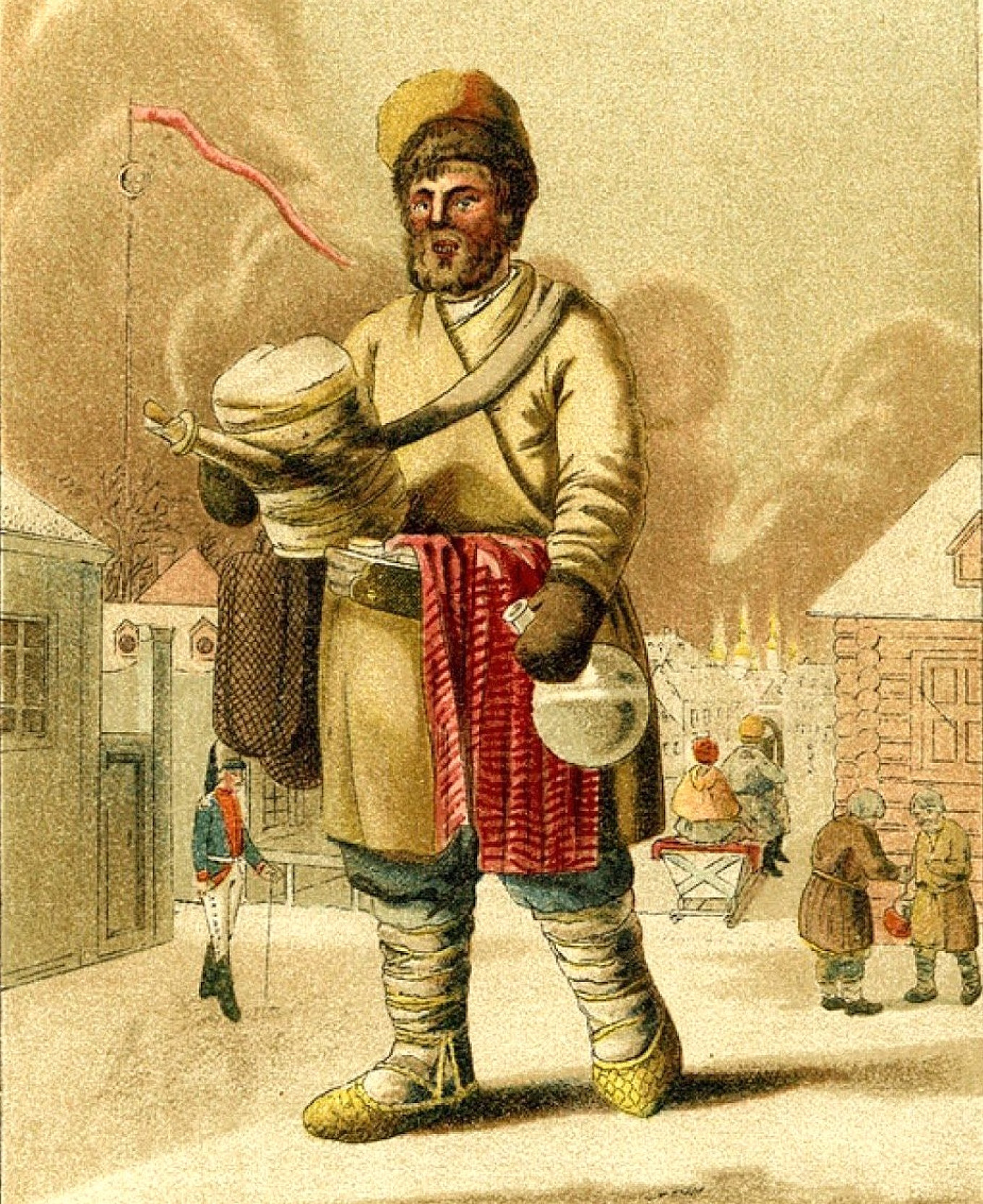
Consumption of sbiten was widespread. Sbiten was a mixture of honey and water in which various herbs (mint, St. John's wort, sage) and spices (cinnamon, cloves, ginger, pepper, mint, cardamom, etc.) were brewed. The historian Ivan Zabelin has written that wine and vinegar could be added to sbiten, too.
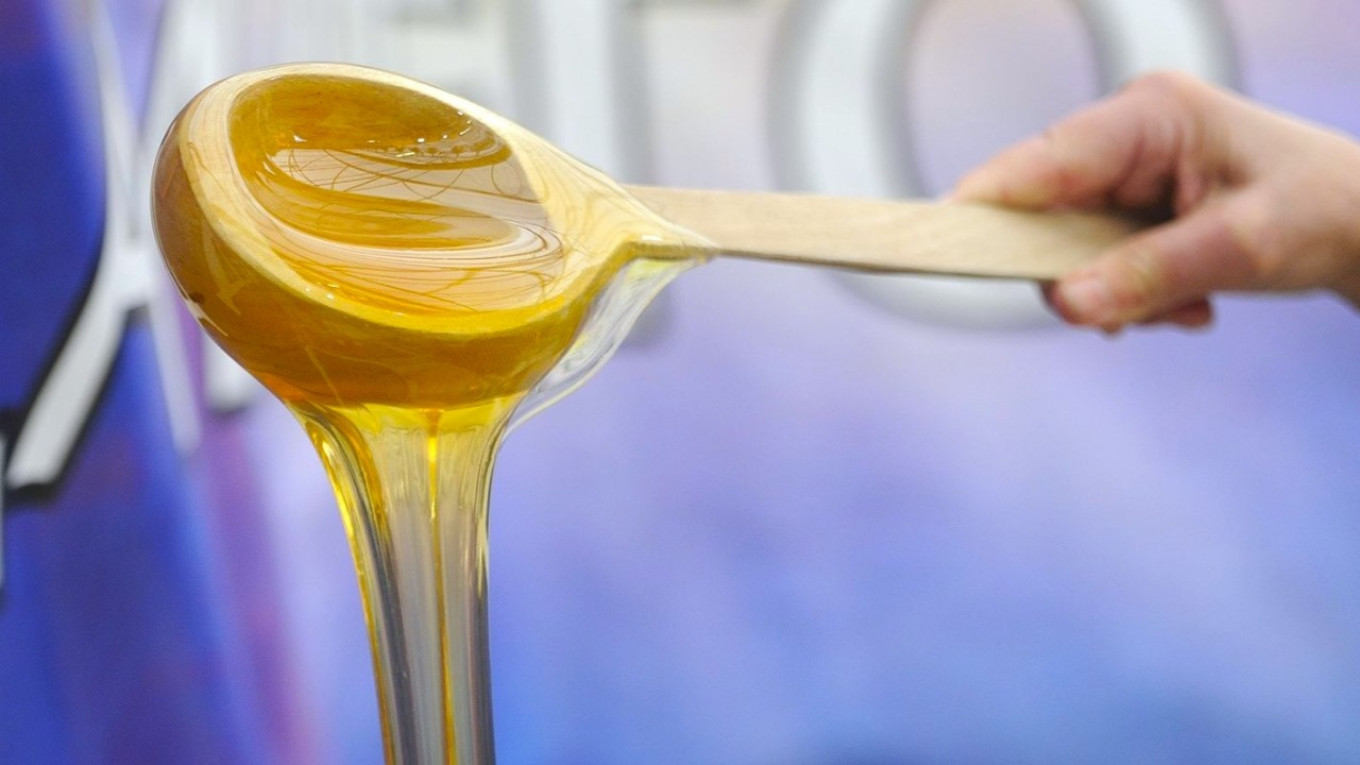
The main ingredient of sbiten was honey, and huge quantities were needed to satisfy demand. In 1673 the sovereign sent a decree to the Pharmacy Court ordering that the Streletsky Troops be sent “a quantity of 72 poods [1,152 kg] of honey.”
To warm up in winter more efficiently, sbiten was sometimes made alcoholic, as was clear from the tsar's letter to the Kirillo-Belozersky Monastery in 1652. In it the monastery authorities were forbidden to “make alcoholic beverages… to put up wine [to distill braga into vodka], to brew beer, and to make mead, and to make alcoholic sbiten, or to bring [any of the above] into the monastery.”
In addition to the type of sbiten sold on the streets there were also varieties that were good enough to send to foreign diplomats from the Russian royal court. For example, in 1667 the Royal Cup Bearer Semyon Tolochanov was given “two buckets of sbiten” from the Food Stores to take when he accompanied the Polish ambassadors.
And, of course, the army and navy served this warming drink to soldiers, as confirmed by the decree of Empress Elizabeth Petrovna in 1750 “On Brewing Beer, Sbiten and Kvass for Naval Officers.”
Today sbiten is an exotic drink for most Russians. A few shops produce it, but in small quantities and mostly for tourists. Attempts to bring back the popularity of sbiten are futile — it’s already part of the past. It was popular when there was no competition from tea and when there was a strong tradition of making it. Those conditions are long gone. Sbiten became a relic of the past in tsarist Russia, and by the end of the 19th century the general public didn’t miss it.
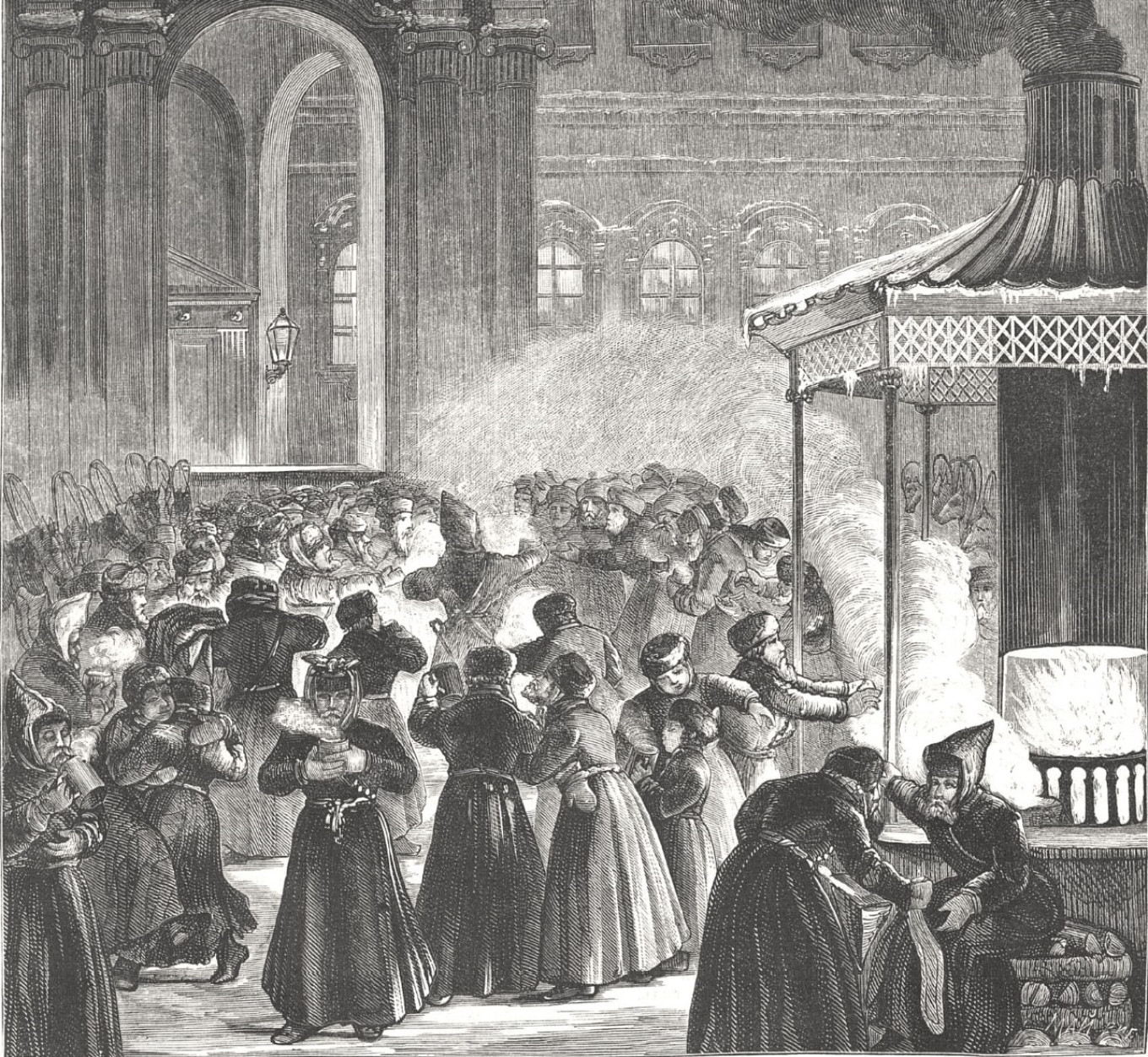
We found interesting comments on this subject in the St. Petersburg newspaper “Illustration” from 1848:
“The vast majority of people drank sbiten — in barracks, in the street, in every single house without exception. A huge quantity of sbiten was sold by untold numbers of vendors every day, not only in small sales to individuals but in constant supplies to homes. At the time people didn’t drink tea. Tea drinking went gradually and at first very slowly from the upper to the lower classes. Anyone who stopped drinking sbiten and began to drink tea was said to have “gone over to the swindlers.” Now tea has taken over sbiten as the fashion: cabmen, porters and manual laborers have also picked up the tea habit. There is no point getting angry about it. And that’s why you’ll rarely see a sbiten vendor these days.”
Indeed, tastes were changing. For example, some people began to drink sbiten with milk. Now it seems very odd, but it shows that the culture and traditions of sbiten had disappeared into the past.
Vendors usually sold sbiten from large containers that they attached to a belt looped over their shoulders. To keep the sbiten from getting cold, they wrapped the containers in cloth and canvas. Often the vendors divided the containers into two halves, each half with a faucet. They poured sbiten from one side and hot milk from the other.
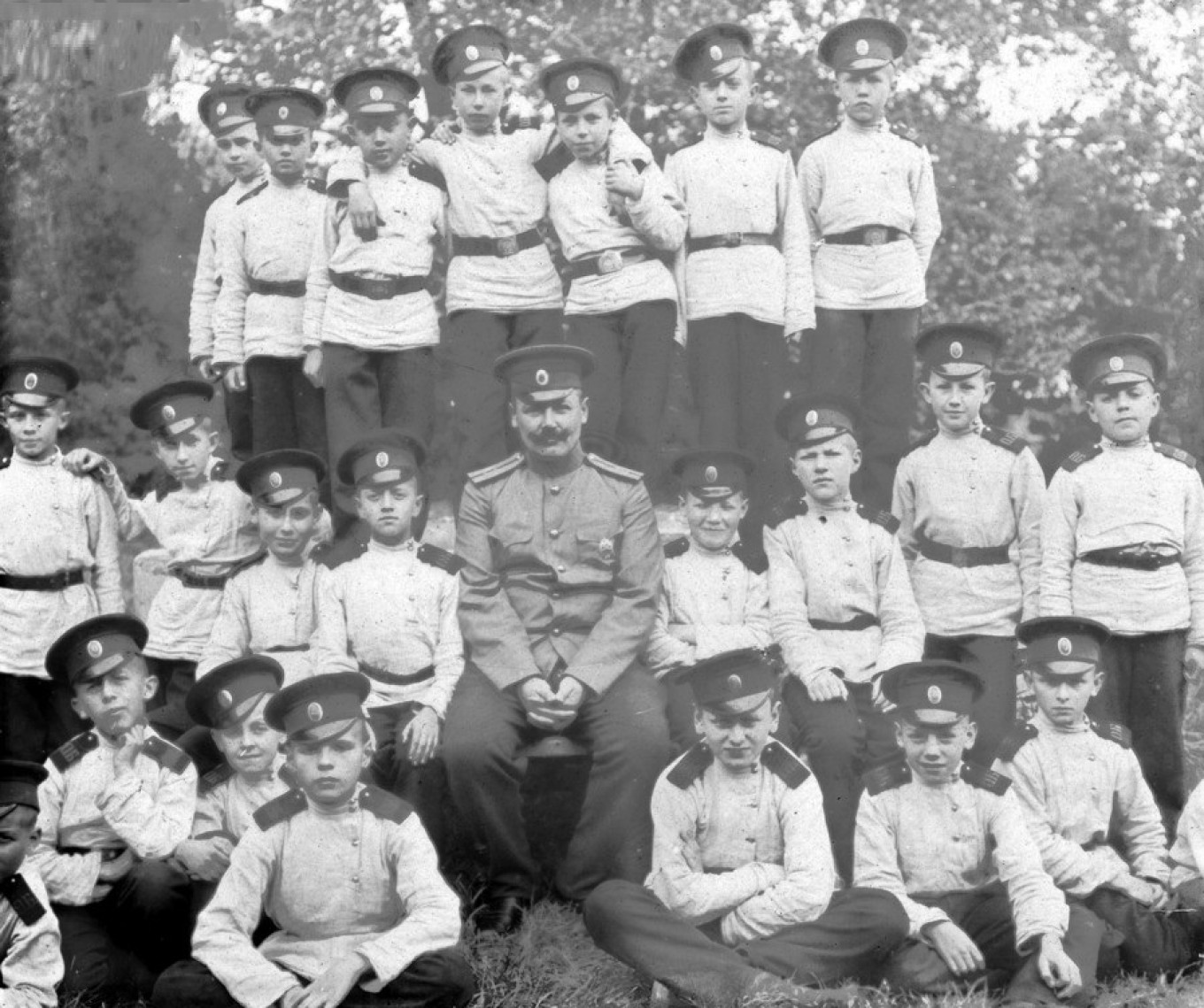
The combination of sbiten and milk was quite widespread. For example, in the memoirs of graduates of the Orel Cadet Corps of the early 20th century, we read: “Our meals consisted of a mug of sbiten with milk, which made for a pleasant drink.” It was especially popular to drink sbiten with milk in schools and medical facilities. It was considered to be a healthy drink, invigorating and restorative.
Today we thought we’d try a taste of the past and see if we still like it.
Sbiten (Hot Mulled Honey Drink)
Ingredients
for 5-6 servings
- 150 g (5.3 oz or scant ½ c) honey
- 4 Tbsp sugar
- 1 liter (quart) of water
- 1 tsp ground cinnamon
- 1/2 tsp cloves
- 1/2 tsp ginger
- 1-2 cardamom seeds
- 2 bay leaves
Instructions
- Slightly moisten sugar with water, place in a clean, dry pan, and keep on low heat until the sugar turns dark brown.
- Transfer the burnt sugar to a heat-resistant glass and pour in150 ml (2/3 c) to dissolve the sugar.
- In another pan, mix the honey with the remaining water and boil for 20 minutes; then add the spices and boil for another 5 minutes.
- Strain the drink through gauze and add the burnt sugar water. Stir.
Drink hot.
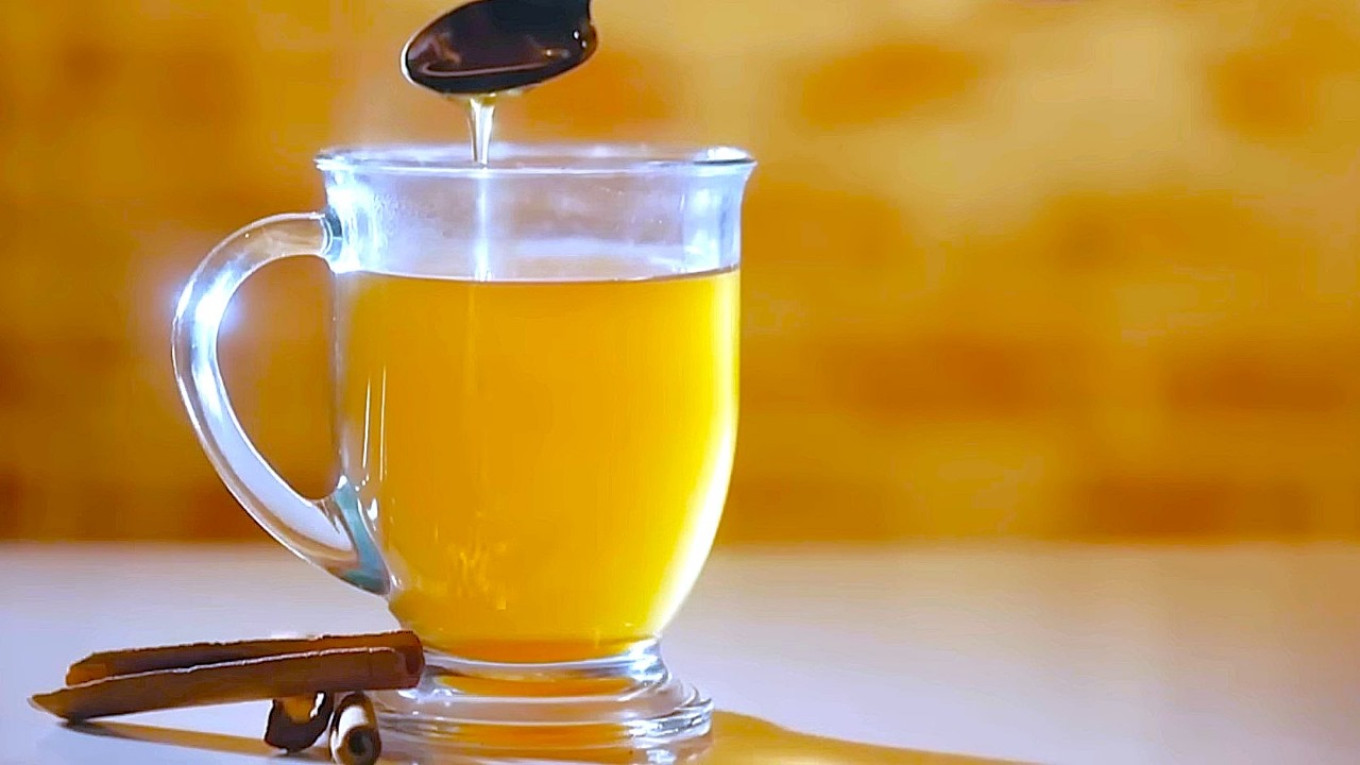
A Message from The Moscow Times:
Dear readers,
We are facing unprecedented challenges. Russia's Prosecutor General's Office has designated The Moscow Times as an "undesirable" organization, criminalizing our work and putting our staff at risk of prosecution. This follows our earlier unjust labeling as a "foreign agent."
These actions are direct attempts to silence independent journalism in Russia. The authorities claim our work "discredits the decisions of the Russian leadership." We see things differently: we strive to provide accurate, unbiased reporting on Russia.
We, the journalists of The Moscow Times, refuse to be silenced. But to continue our work, we need your help.
Your support, no matter how small, makes a world of difference. If you can, please support us monthly starting from just $2. It's quick to set up, and every contribution makes a significant impact.
By supporting The Moscow Times, you're defending open, independent journalism in the face of repression. Thank you for standing with us.
Remind me later.

